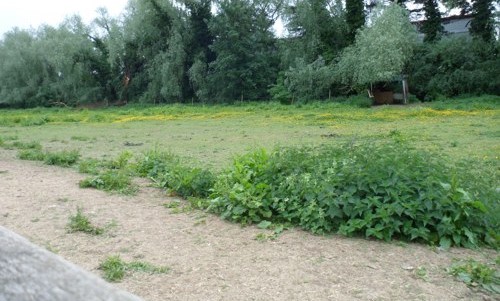If the grazing has reduced or stopped growing, we advise that you supplement the lack of grazing with forage. This could be hay or straw depending on the needs of the equine. We recommend that straw is only fed to equines that have good dentition. Straw will have lower nutritional value so it may not suit vulnerable equines.
- Home
- What We Do
- Equine Advice
- Grazing and Pasture
Grazing and Pasture
When owning equines, it is important that you have a good grassland management plan as equines can graze for around 18 hours per day. This will ensure that you will have sustainable grazing for your horses. This will support your equines health and happiness, allowing them to graze naturally and exhibit normal behaviours. They use their paddock for food, exercise and a secure area to show natural behaviours that are important to their wellbeing, for example, socialising and interacting with others.
Having a good plan can prevent your paddock becoming ‘horse sick’. This can be explained as a field that is overstocked, therefore not enough grass for the number of horses, overgrazed, weeds / poisonous plants, worm infested and rough land.

*Image credit: The British Horse Society
Daily task and routine care for horse owners
If you find the time and resources to maintain your paddocks you and your horse will benefit in the long term. Completing routine tasks can support with the health of your pasture and your equines:
- Check that fencing and gates are secure and in good condition to prevent your horses getting loose and being a danger to themselves and others. Injuries and potentially losing your equines.
- Depending on the time of year and your equines requirements, check the quality and quantity of grazing available. Restrict grazing or supplement with extra forage if required.
- Check the water supply, especially with extreme temperatures. Hot weather they will require more water to keep hydrated, freezing temperatures will require the ice breaking to access the water.
- Removing droppings regularly, ideally daily. This will help with reducing parasite levels and also prevent areas of grazing that become rough due to the equines not wanting to graze where the droppings are present.
- Check for any poisonous plants, remove them to prevent re-growth, and take appropriate measures to dispose of them safely. Remove any rubbish or hazards from the field.
- Check the equines daily for any injuries and monitor weight throughout the seasons (see our Body Condition Score page for more information).
Over stocking
For your grazing to be sustainable we advise you to consider the number of equines on the area. It is recommended that if a horse is kept at grass, it will require 1-1.5 acres of land per horse. There are many considerations:
- Size of horse and breed/type
- Body condition score
- Time of year
- Quantity and quality of grass and soil type
- The number of equines on the land
- Care of the pasture and management
Too much grass
If you have too much grazing for your equine’s needs, and their Body Condition Score (BCS) has increased, and they are gaining weight, consider restricting grazing, using track systems, stabling or moving to a pad for part of the day to reduce grass intake. Adding movement and increasing exercise will also support weight loss.
Not enough grass
Pasture management
There are several tasks to complete to maintain the grass and provide a safe nutritious environment for your horse. We advise rotational grazing, moving equines onto different areas of the pasture to allow for rest and re-growth of grass. This can support with winter problems and mud as well as restricting grazing in the spring when the grass is at its best.
After the winter months you may have areas of the paddock that has been poached and muddy, you could reseed these areas in the spring. For best results we recommend not grazing these areas until the grass is established.
It is important to research the types of grass to use, having a good mix of grasses with herbs is advisable to balance the nutritional content. There are now equine specific grass mixes on the market but we advise making sure the grass mix will suit your horse’s needs.
If areas of land have become very poached and uneven, you could ask a farm contractor to roll the land for you, also rolling after reseeding supports the new growth by embedding the seeds into the land.
If you are restricting grazing and areas of grass are growing too long, you could get them topped. This can prevent weeds seeding and spreading and helps manage the amount of grass in that area. Be careful not to top ragwort as it becomes more palatable when dried. Topping to shorter grass can produce higher sugar levels so may not be suitable for all horses.
In horse sick paddocks, removing weeds is important as they take up space for grass. The most common ones that grow in paddocks are docks, nettles and thistles. The best way of removing them is to hand pull or spot spray, seek advice from contractor for more details.
Making plans, preparing for the changing seasons and catering for your horse’s needs can help to support sustainable grazing all year.
Remember we are here at Bransby Horses to support you with the health and welfare of your horse, if you require further information on any of the above or you would like to discuss your management plan please call 01427 787369 or email welfare@bransbyhorses.co.uk.
